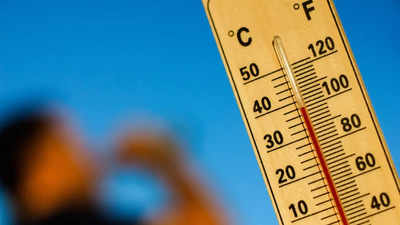MUMBAI: Increasingly dense concrete jungles and depleting greenery in the city have affected each suburb differently. If you travel from Ghatkopar to Powai, you can feel a marked dip in temperature—it is 10 to 13 degree Celsius lower.
Urban experts say unplanned concretisation with less scope for greenery in some places as opposed to more open spaces, water harvesting ang green buildings in some others will eventually lead to the creation of man-made concrete deserts within every city.
A new analysis has shown a significant temperature variation between hotter suburbs and cooler pockets across the Mumbai Metropolitan Region (MMR) in March 2025. The study by Respirer Living Sciences (RLS) revealed temperature variations across Mumbai, pointing to an intensifying Urban Heat Island (UHI) effect.
Between March 1 and March 22, 2025, suburban areas such as Vasai West and Ghatkopar experienced average temperatures of 33.5 degrees and 33.3 degrees, respectively, while Powai —one of the city’s greener and less densely built areas —registered a much cooler average of 20.4 degrees. This represents a striking 13.1-degree difference within the same city.
The UHI, a well-documented urban phenomenon, refers to the significant temperature difference between densely built urban zones and less developed or greener parts of a city. Experts say even a densely built concrete high-rises restrict air velocity in and around that area, making the climate hotter.
“Increasingly, we are witnessing micro-climate zones forming within cities like Mumbai,” said Ronak Sutaria, founder and CEO of Respirer Living Sciences, a climate-tech startup. “These temperature differences are not just academic—they translate into higher heat stress and related health problems for residents, especially in poorly ventilated or overbuilt neighbourhoods,” he added.
According to data from 22 Central Pollution Control Board (CPCB) stations, Vasai West topped the list with an average temperature of 33.5 degrees, followed closely by Ghatkopar at 33.3 degrees, and Colaba (South Mumbai) at 32.4 degrees. In stark contrast, Powai recorded 20.4 degrees. Other cooler areas included Chakala (Andheri East) at 23.4 degrees and Chembur at 25.5 degrees. Although Deonar, BARC and RCF campuses are greener, air pollution takes a toll during winter. For Chakala in Andheri East, the green patch of Aarey and Mahakali Caves brings cooling comfort.
“It’s high time our development control rules mandate more trees proportionate to additional construction area,” said urban planner Nitin Killawala.
Even Colaba, located on the city’s southern tip and known for its coastal breeze, now appears on the warmer end of the spectrum—underscoring that even so-called “cool zones” are not immune to rising heat. “We cannot treat Mumbai as a single thermal unit. Our mitigation efforts—from tree plantation drives to heat action plans— must be customised based on hyperlocal data,” said Sutaria.




